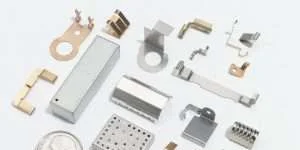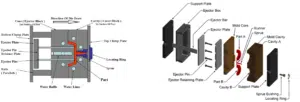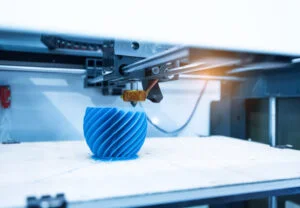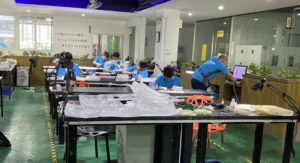Creating a prototype is an initial step as well as a crucial step in the product development process. With the help of metal prototypes, engineers can find the defects or faults in their ideas before mass production.
There are different methods to make metal prototypes. All the methods have unique advantages and disadvantages. These methods help manufacturers to follow the right approach to make innovative metal parts. In this article, you get a proper insight into how to create a prototype with different methods.
Why Choose for Metal Prototypes?
Material selection is a crucial step for creating prototypes. Some common machining materials for prototyping include plastics, resins, ceramics, wood, metals, and more. But metal holds many advantages among all these options. Metal prototypes are a good choice for functional testing because of different reasons, and these include:

Strength and Durability
Metal prototypes can take the outside forces without any permanent damage to them because of their strength and durability. While many plastic prototypes can not maintain their structure and performance over time. In addition, metal also can withstand the impact of harsh environments and temperature variations.
Versatile
Aluminum, steel, titanium, copper, or brass are the various metals that can be utilized for prototyping. This versatility helps engineers to choose the best metal according to their requirements. Also, metals are also suitable to form complex geometries.
Realistic Testing
Metal prototypes can provide more accurate testing results because they closely mimic the final product. Metals can withstand the pressure during different stages of testing without wear or deformation. Therefore, these prototypes can detect potential flaws in the early development process.
Cost-Effective
Generally plastic is a cheaper material option for prototypes when compared to metals. However, metal prototypes can become a more cost-effective option for you because you don’t need to re-manufacture metal prototypes over and over again. Metal prototypes are suited for high-stress applications and go for multiple testing without degradation.
Different Methods to Make a Metal Prototype
There are different options available to make a metal prototype. In various industries, the development process involves different requirements and complexities. The following are the major methods to make metal prototypes.

CNC Machining Prototype
CNC machining works on the instructions of computer-controlled machines. CAD gives instructions to the CNC controller to control the movement of the equipment to form a metal prototype.
There are various types of CNC machining, these include 3-axis, 4-axis, and 5-axis CNC . The CNC machines with more axes can handle more complex tasks. Therefore, selecting a CNC machine depends on the complexity of the parts or machining operations.
Pros and Cons of CNC Machining
The CNC machining process provides high precision, repeatability, and the ability to create complex shapes. It also offers quick turnaround times and can work with a wide range of materials.
However, it has high initial setup costs and the need for skilled operators. Additionally, the process may produce waste material and require regular maintenance.

3D Printing Metal Prototype
3D printing metal is a modern way to make metal prototypes. This is different from CNC machining because it is an additive manufacturing method. This process creates metal parts layer by layer by using metal powder.
The metal powder forms a thin layer on the build platform, and the electron beam settles the layers. This process goes on until the entire product is formed. 3D printing is suitable for making lightweight, complex, and single-use or temporary metal parts.
Pros and Cons of 3D Printing
With 3D printing, it is easy to create complex designs. It also has less turnaround time as compared to CNC machining. But It does not give the prototypes a smooth surface finish. It is an expensive method because of the use of metal powder and the post-processing of the product.

Metal Die Casting
Metal die casting creates complex parts using a mold cavity. In this method, molten metal gets transferred into a mold cavity and after cooling it takes the form of a prototype. It is an efficient method to produce complex components in different industries. This method has the capability to produce various parts during mass production with accuracy.
Pros and Cons of Die Casting
Metal casting allows the rapid production of complex components with accuracy. It is cost-effective as well as a faster way to form metal prototypes.
However, this method can be expensive for intricate parts because they need special dies and high investment. Another disadvantage is the porosity and surface issues. These issues can affect the prototype’s strength and aesthetics, which need extra cost to fix these issues.

Sheet Metal Prototyping
Sheet metal prototyping consists of three steps: cutting, bending, and shaping a metal sheet to produce a prototype. With the help of CAD software, engineers form a 2D or 3D design. After selecting metal according to the requirements, further actions are performed on the metal sheet to create the desired metal prototype.
Pros and Cons of Sheet Metal Fabrication
Sheet metal prototyping speeds up the product development process. It is also less expensive as compared to other traditional methods. So, it is suitable for low-cost and quick-turnaround projects.
However, achieving complex shapes is tough or sometimes impossible, because sheet metal fabrication only relies on cutting and bending.

Metal Extrusion
Metal extrusion means forcing metal through a die to create the desired shape. When metal passes through the extrusion die, it produces fixed cross-sectional profiles or parts. During this process metal goes through compressive and shear stress to get the desired shape. These forces can mold metal in any shape.
Pros and Cons of Metal Extrusion
It is a cost-effective method because it avoids the wastage of metal. Almost all the prototypes produced through this method do not need post-processing machining because it gives satisfactory results.
However, it is unsuitable for brittle material and can lead to deformation because of the compressive forces.
Typical Metals Suitable for Prototyping
Metals are versatile and have unique properties. This is the reason they are part of different manufacturing industries. Here are some metals that are considered suitable for metal prototyping.
Aluminum
Aluminum is a common metal used in various industries to produce prototypes. It is useful to produce lightweight components in the aerospace and automotive industries. Aluminum prototypes are durable and cost-effective.
Steel
Steel is a strong and sturdy metal that makes it capable of wearing the loads. The strength of steel makes it suitable for construction, machinery, or automotive industries.
Brass
This metal is suitable for electrical components because of its good electrical conductivity. It is a versatile material that is very easy to machine and can meet the required specifications.
Titanium
Titanium is suitable for prototyping because it is solid and lightweight. These properties are ideal for applications that need strength without adding weight to the product.
Copper
Copper suits for electronics prototypes because of its thermal and electrical conductivity. It is also malleable, so it can easily be shaped into any complex design.

Practical Machining Tips for Creating Metal Prototype
It is necessary to follow some machining tips to achieve a high-quality metal rapid prototype. These tips ensure engineers and designers get the desired prototypes.
Material Selection
Choosing the appropriate material is necessary for the overall success of the metal prototype. It impacts the performance as well as the functionality of the prototype. Metal selection depends upon mechanical properties and thermal conductivity. You should also know if the selected metal is compatible with the intended application or not.
For the automotive industry, you need lightweight materials like aluminum to create different components like wheels or body panels because of their strength-to-weight ratio. Material selection impacts the fuel consumption and overall performance of the vehicle.
CAD- Design
The CAD or Computer-aided design model is crucial to produce an accurate prototype. The entire prototyping process depends upon it because it leads to achieving the desired dimensions and functionality of the prototype.
CAD software is user-friendly for making high-quality metal prototypes because it can easily investigate and diagnose the problems in prototype design. For example, if you need to make changes to the prototype design, there is no need to start from scratch, instead, you can easily modify the existing design.
Tool Selection
Tool selection is also necessary to machine the metal to get the desired prototype. During the selection of tools, you need to consider some factors like material, different machining processes, and tool geometry.
For example, techniques like milling, drilling, and turning use specific tools to make a metal prototype to achieve the required results. Wrong tool selection leads to damage to the workpiece, which can increase the overall production cost.
Machining Parameters
Some machining parameters impact the metal rapid prototyping process. These parameters include cutting speed, feed rate, and depth of cut. It is necessary to optimize all these parameters during prototype development to get efficient results.

Applications for Metal Prototypes
Metal prototypes have versatile properties that make them suitable for various industry applications. These prototypes ensure that multiple components can match the requirements or not. They are compatible with various industries and have numerous applications.
Aerospace and Automotive
Aerospace and automotive industries use metal prototypes to test aircraft and vehicle components to improve the final product’s performance. Both industries need materials that can take high mechanical stresses. Metal fulfills all the requirements because of its strength, durability, and reusability.
Medical Industry
Metal prototypes improve the efficiency and safety of products in the medical field. Medical industries utilize these prototypes for surgical instruments, implants, and other medical devices to form flawless products that meet medical safety standards.
Electronics
Metal prototypes ensure engineers find their designs suitable for mass production. These prototypes have mechanical and electrical properties, making them ideal for testing electrical components and devices.
Get your Metal Prototypes and Parts at XC Machining
At XC Machining, we provide high-quality metal prototypes for your needs. Our one-stop machining services, including CNC machining, sheet metal fabrication, die-casting, and 3D printing, ensure precision and consistency in every stage we produce. Whether you require prototypes for testing or custom metal components for production, our experienced team and advanced technology can and will deliver results.
We also offer a wide range of material- selection and can handle from 1 to 100,000 PCS of parts. Trust XC Machining for reliable, cost-effective solutions for your metal prototyping and part needs. Contact us today to discuss your specific requirements and let us bring your ideas to life.
Read More: Brass CNC Machining
Conclusion
Metal prototyping provides many benefits during product development by detecting faults before manufacturing on a larger scale. With the help of metal prototypes, you get assurance that your design is compatible or efficient according to your project needs. In case of any discrepancy, you can make changes at the early manufacturing stage. It can save you money and time during product development.
FAQs
What is the most common rapid prototyping process?
3D printing is the most common metal rapid prototyping process because it is versatile and contributes to creating complex geometries with ease.
What is the typical turnaround time for metal prototyping?
Turnaround time depends upon various factors, like the complexity of the design, material, or prototyping method. Traditional manufacturing processes have more turnaround time as compared to 3D printing. Generally, it takes a few days to a few weeks.
Which metal is best for high-temperature applications?
Metals like stainless steel and titanium have excellent heat resistance properties that make them best for high-temperature applications.














